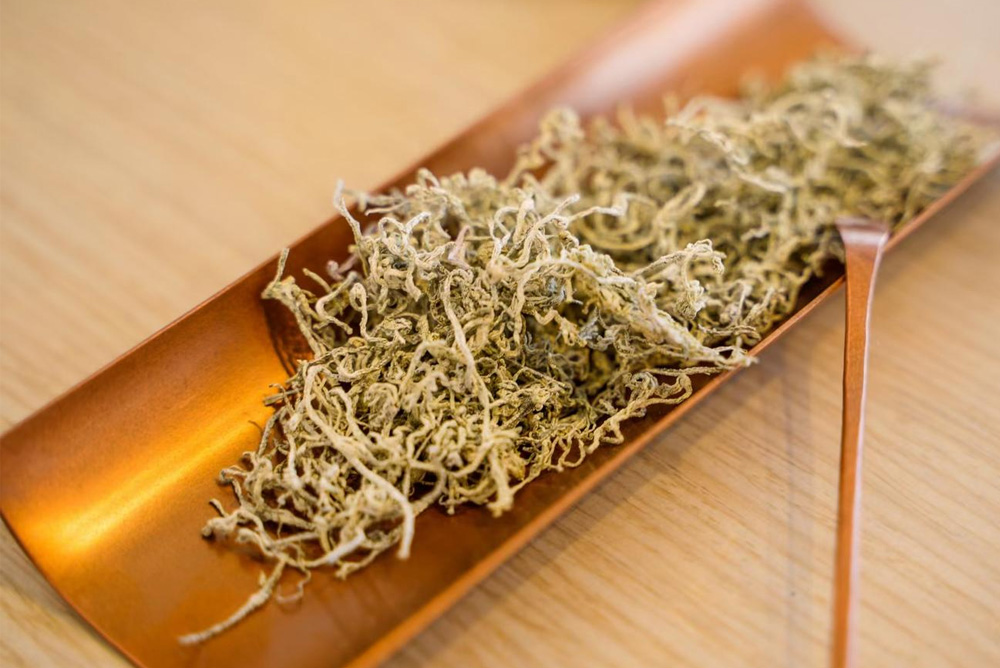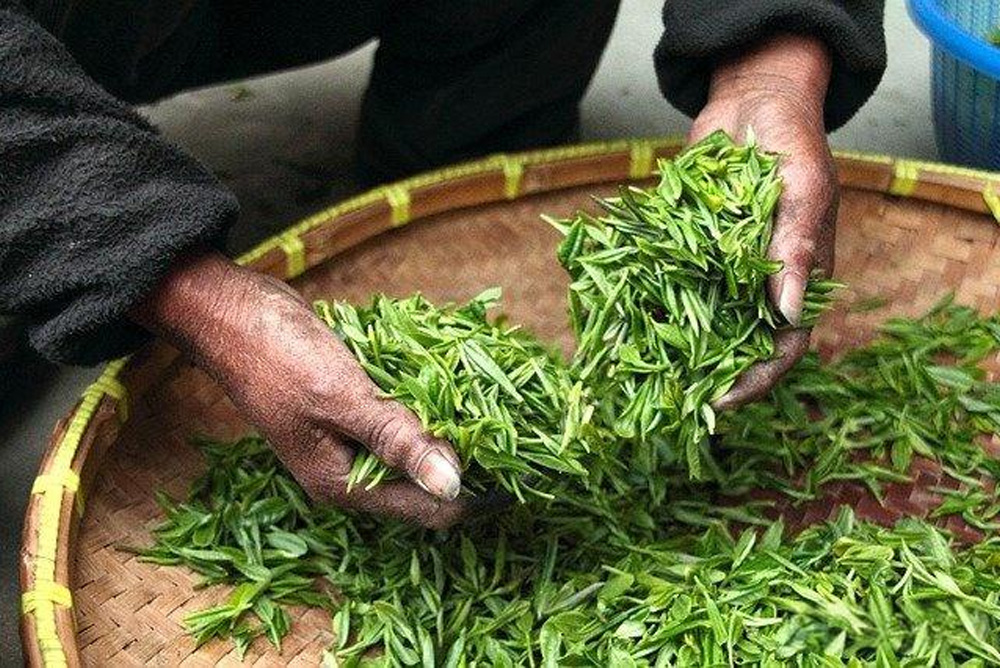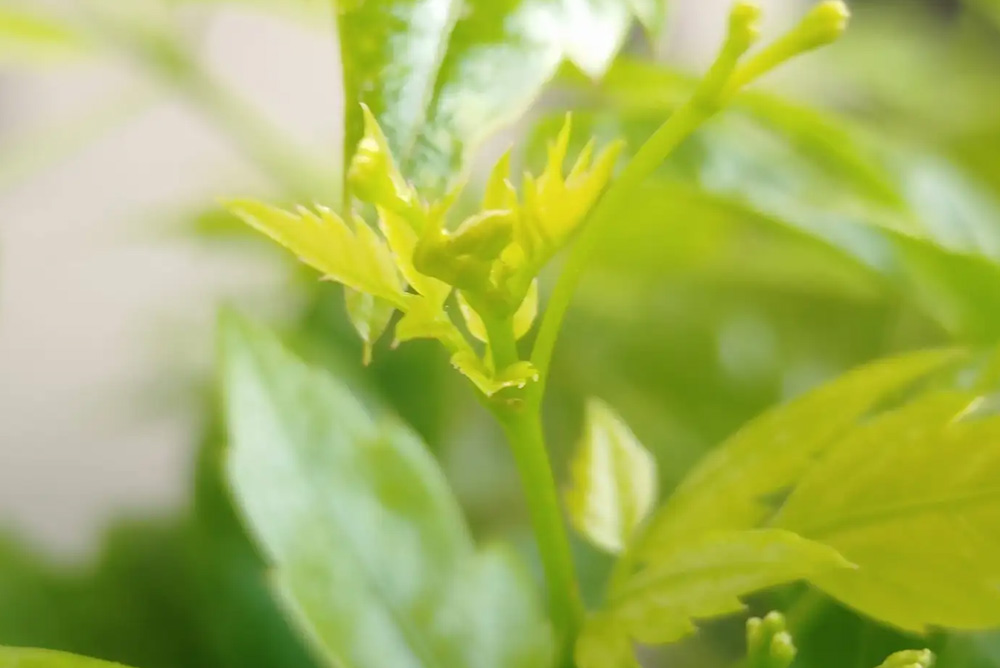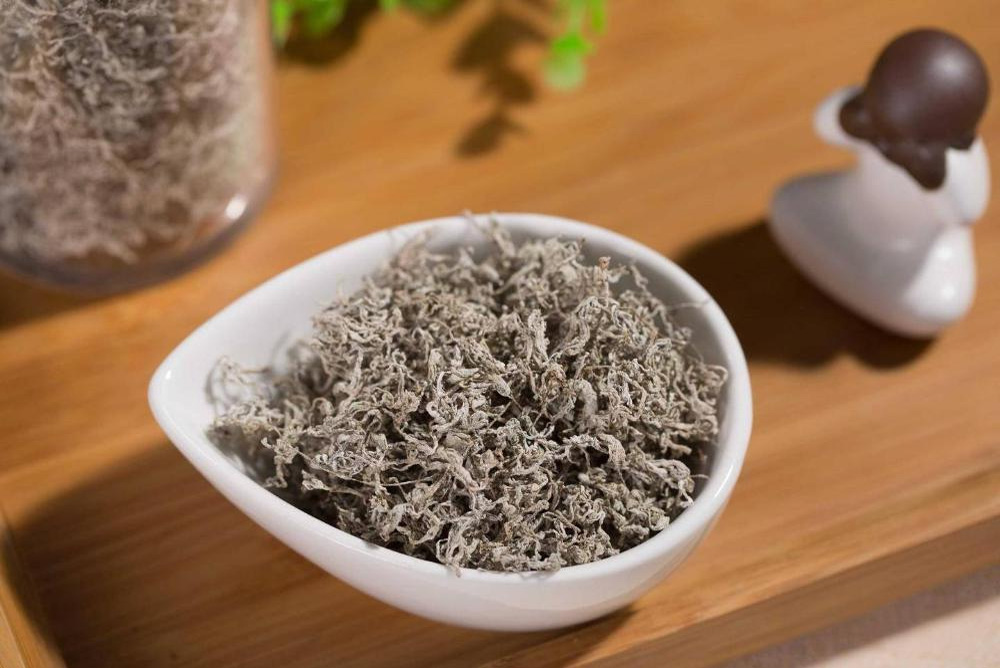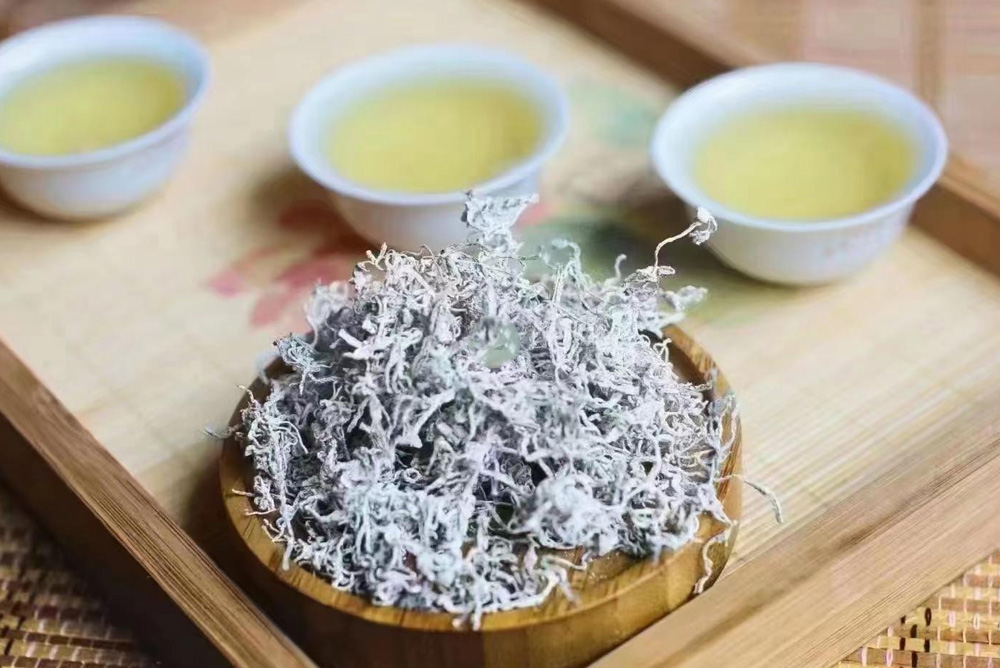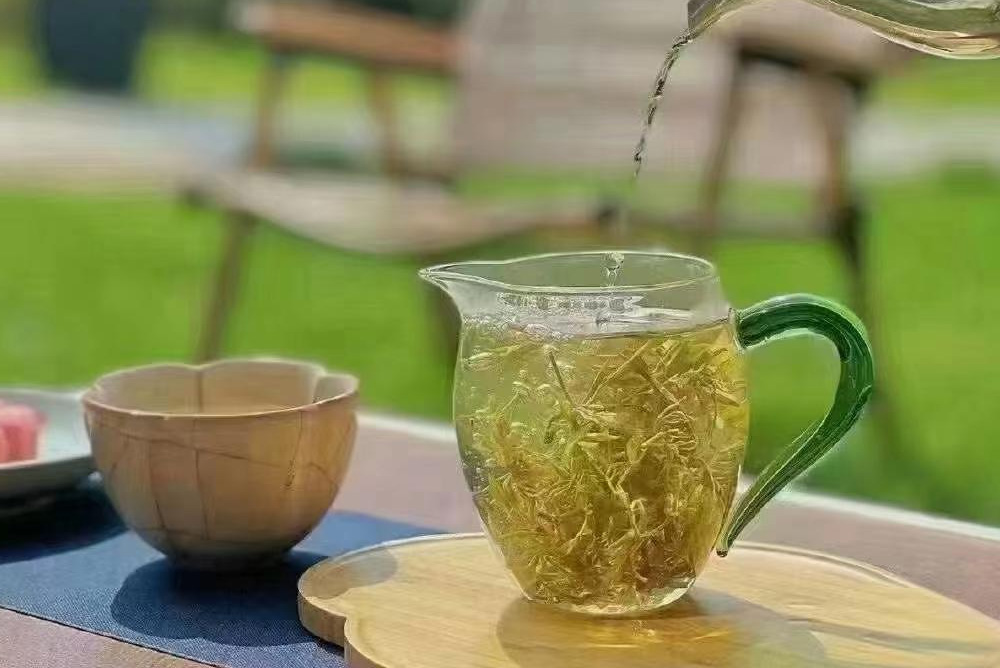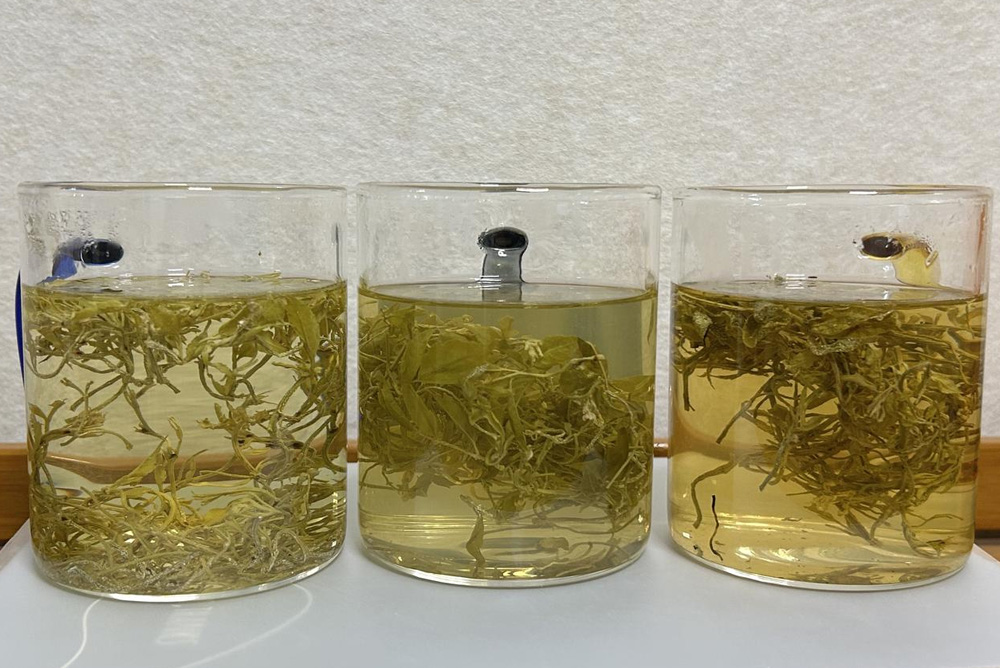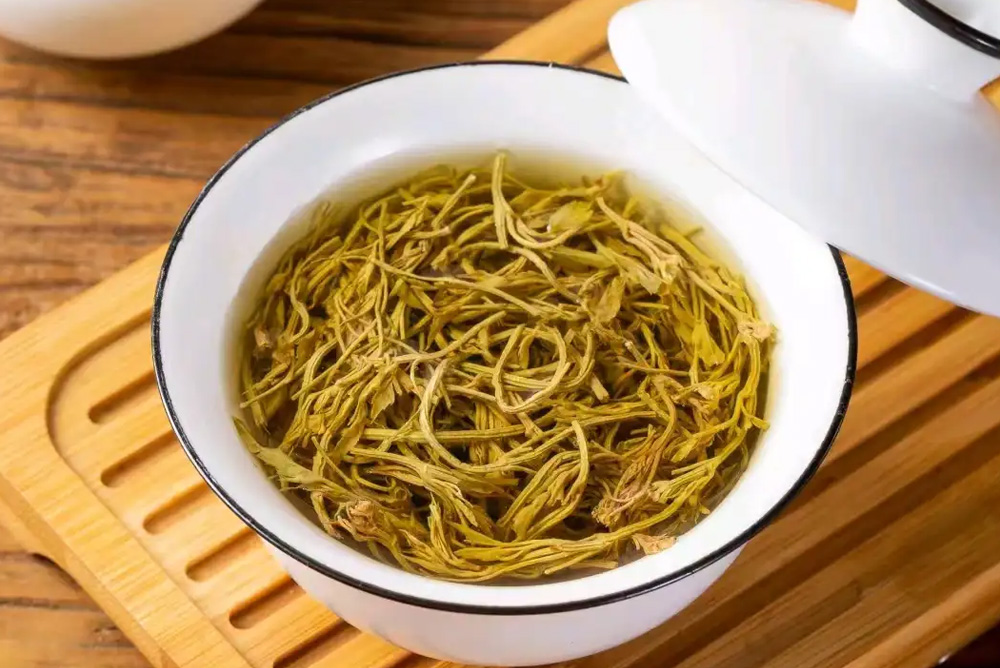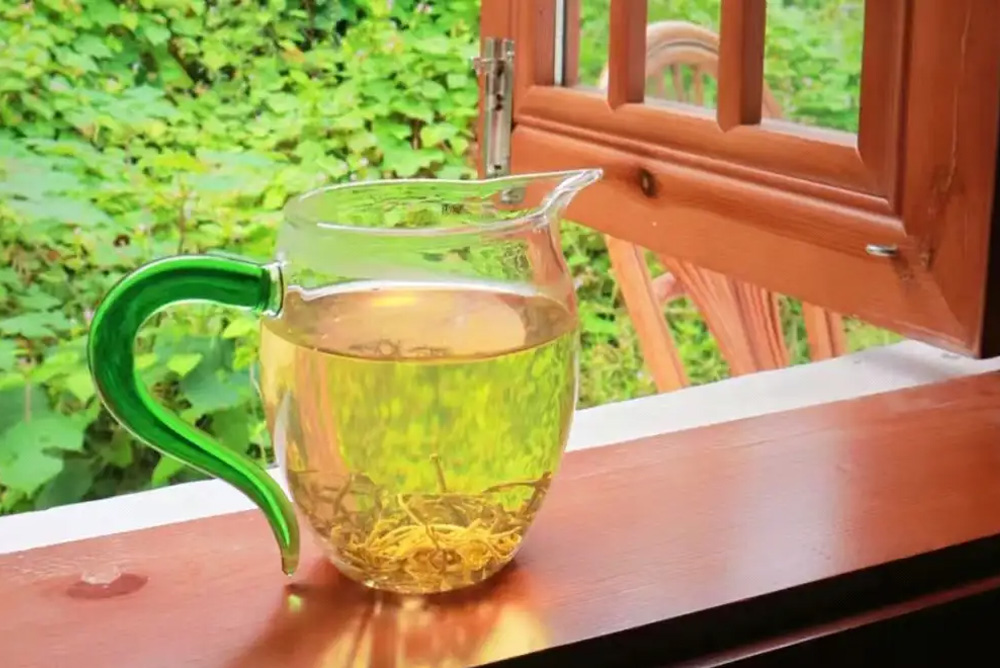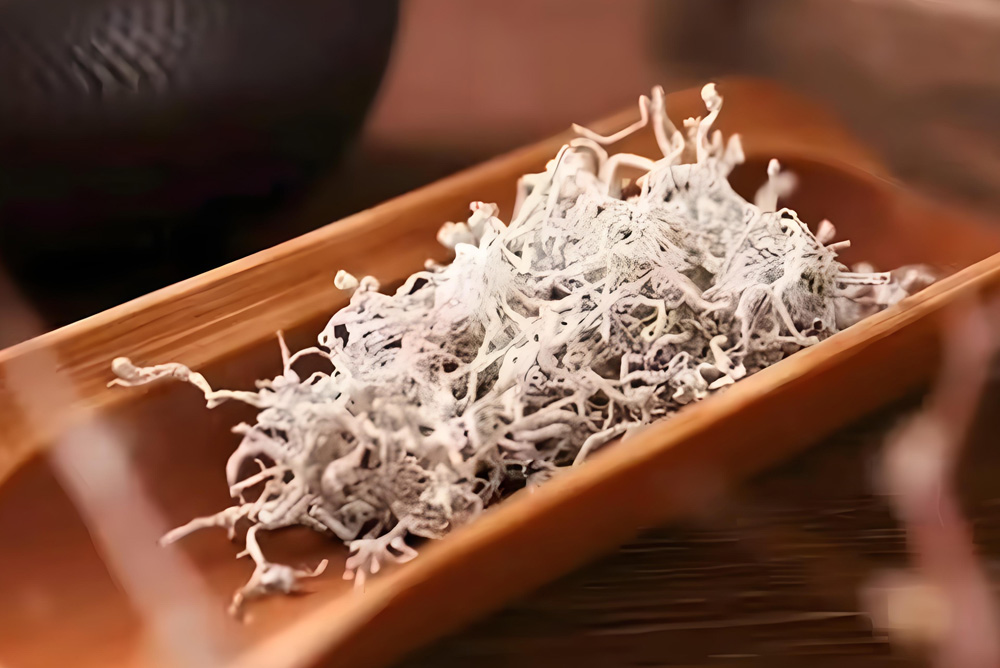Vine tea is a treasured herbal infusion from China’s Wuling Mountains. Ampelopsis grossedentata is the botanical name behind this tea’s clean taste and high flavonoid content. This guide shows you how to spot quality quickly—so you buy with confidence.
What Makes Vine Tea (Ampelopsis grossedentata) Unique
Vine tea grows on wild and cultivated vines in the Wuling range, especially Enshi Prefecture (Laifeng County), plus Zhangjiajie and Yongshun. Buyers value it for its rich flavonoids and a taste that starts slightly bitter, then turns pleasantly sweet.
Start with Origin
-
Look for Wuling Mountain origins. Enshi—particularly Laifeng County—is regarded as the heartland for authentic vine tea.
-
Clear origin labeling helps ensure consistent quality and traceability.
Grade First: Choose Bud‑Tip Material
Flavonoids concentrate in the tender bud tips. Select bud‑tip vine tea over mature leaves.
-
Ideal size: top buds about 3–5 cm long (≈1.2–2.0 in).
-
Bud‑tip material can hold about three times the flavonoids of older leaves.
Check with Eyes, Cup, and Tongue
Appearance: Slender, even strands with a fine, frost‑like bloom—often a sign of flavonoid‑rich tips.
Brew color: Clear amber‑gold liquor with no haze.
Taste: A brief, gentle bitterness that quickly flips to a lasting sweetness. If the cup is dull, flat, or murky, quality may be lower.
Processing Affects Potency
Quality producers “fix” the leaves to halt oxidation and protect nutrients. Two common methods:
-
Drum‑firing: Traditional, steady heat.
-
Microwave de‑enzyming: A modern, tradition‑inspired method that often improves flavonoid retention and a clean, balanced cup.
Ask suppliers which method they use and for supporting quality data.
How Vine Tea Differs from Other Teas
-
Different plant: It is Ampelopsis grossedentata, not Camellia sinensis (green/black tea).
-
Flavor profile: Mild upfront bitterness, then strong returning sweetness (“huigan”).
-
Brew color: Golden‑amber rather than green.
Brewing Tips (Hot & Cold)
-
Hot brew: Use 2–3 g per 250 ml (8.5 oz). Water at 90–95°C (194–203°F). Steep 2–3 minutes. Re‑infuse 3–5 times.
-
Iced brew: Use 5 g per 1 L of cold water. Refrigerate 6–8 hours, then strain.
Tip: Don’t over‑steep; longer times can increase bitterness.
Quick Buying Checklist
-
Origin: Wuling Mountains; Enshi/Laifeng as a top choice.
-
Grade: Bud‑tip material, 3–5 cm (≈1.2–2.0 in).
-
Look: Slim, even strands with a light bloom.
-
Liquor: Clear amber‑gold.
-
Taste: Brief bitterness, quick sweet finish.
-
Process: Ask about fixation method and test reports.
Quality & Formats for Every Channel
If you need consistent supply, insist on traceability, clean processing, and third‑party testing—especially for flavonoid levels and safety.
Why Work with JINQI
-
Authentic origin: Grown exclusively in Laifeng County, Enshi.
-
GMP‑certified production: Clean, consistent, and audit‑ready.
-
Green Food Base gardens: Eco‑friendly cultivation.
-
Independent testing & full traceability: Batch COAs available.
-
Product range: Loose leaf, pressed cakes/pearls, tea bags, instant vine tea, functional beverages, nutraceutical extracts, and oral care formats.
Choosing high‑grade vine tea (Ampelopsis grossedentata) is simple when you focus on origin, bud‑tip grade, clean processing, and a bright, sweet cup. Ready to compare samples or discuss private label and bulk supply? Contact JINQI Vine Tea Co., Ltd. in Laifeng for specs, COAs, and pricing.
FAQs
1) How do I know if vine tea is high in flavonoids?
Pick bud‑tip grades from trusted Wuling origins; look for a fine bloom on the strands and ask for third‑party test reports.
2) What should quality vine tea taste like?
A light bitterness at first, then a clean, long‑lasting sweetness with a clear amber‑gold brew.
3) What’s the best way to brew vine tea?
Use 2–3 g per 250 ml at 90–95°C for 2–3 minutes; re‑infuse several times or cold‑brew 5 g per liter for 6–8 hours.
4) Can I drink vine tea every day?
Yes. Most people can safely enjoy vine tea daily for long-term wellness benefits.

